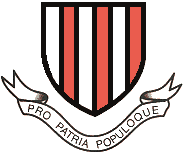Balliol College Archives & Manuscripts |
Back to: HOME > College History
Balliol and Blundell's School


List of Blundell Fellows 1602 - 1852
List of Blundell Scholars 1602 - 1977
History of the Blundell Foundation at Balliol
Peter Blundell was a very wealthy merchant of Tiverton and London. He died unmarried in April 1601. His will was long, complicated and predominantly charitable. In it, he set out and funded plans for a free grammar school at Tiverton, providing a further £2000 to be used in the "establishing of six . students in Divinity in the university of Oxford or Cambridge or both for ever". His "righte deare and honorable Friende Sir John Popham, Knighte, Lord Chief Justice of England" was asked to see his wishes carried out.
Popham was given a free hand to negotiate arrangements for the six university places, but Blundell stipulated that once a scheme had been set up, the students were to be selected by his Feoffees [Trustees and Governors of the School] "with the advice of the Schoolmaster there for the time being out of the said Grammar School of Tyverton, and not else where". The School, Blundell's, was duly founded, traditionally in 1604. Peter Blundell's purpose in endowing places at the universities was clearly stated in his will as "the increase of good and godly preachers of the Gospel" - a typically Puritan sentiment. In Cambridge, Popham approached Sidney Sussex College and Emmanuel College, both new and frankly Puritan foundations. In Oxford, he turned to Balliol, which also had Puritan leanings, and was his own college as well. Emmanuel declined involvement, but interim arrangements were soon made for Balliol and Sidney Sussex to have two and four Blundell places respectively. A definitive agreement for the places at Balliol - the "First Blundell Composition" - was made in 1615, Popham having died meanwhile. The College was given £700 to buy lands in Woodstock as the endowment for the scheme, which was to support one Blundell Scholar and one Blundell Fellow simultaneously. They were to receive annual stipends of £8 and £15 respectively, with the same rights and obligations as their colleagues on the ancient Foundation of the College ["Domus"].
When Blundell Fellows had graduated MA, they were to "apply and addict themselves to the study of Divinity" and were to "enter the Ministry, and become preachers of the word of God" as soon as possible, although a Fellow could hold his place until he had been ten years an MA, or accepted "a benefice with cure of souls, or charge of school". The Scholar, chosen from the School at Tiverton as laid down by Peter Blundell, succeeded the Fellow automatically when a vacancy occurred, whereupon the Feoffees presented a new Scholar. The object of the scheme was to secure the permanent presence in the College of two Tivertonians. This required some finesse. On the one hand, it was clear that when a Scholar was ready to take on the status of Fellow, the Fellow might not be ready or willing to resign. On the other hand, a Fellow might vacate his place by death, marriage, or taking a benefice before the Scholar was of sufficient standing to be promoted. Two special provisions were therefore made. If a Blundell Scholar had been a BA graduate for a full year, but found the Blundell Fellowship occupied, he was allowed to claim the next Domus Fellowship to fall vacant, and to hold it until the Blundell Fellowship vacancy. If a Blundell Fellowship vacancy arose too soon for the incumbent Scholar to take it up immediately, the Feoffees could send a second Scholar.
The College's finances were greatly weakened in the mid-seventeenth century by the Civil War, the Great Fire of London, mismanagement, and corruption. The Feoffees showed, at an early stage of these financial difficulties, that they were well disposed towards the College, with a gift of £50 in 1668. When the Master of Balliol (Thomas Good) discovered that the Feoffees were minded to expand their provision for Blundell's boys at the universities, he began to negotiate with much larger sums in view. His efforts were complicated by the attitude of some Fellows, who made a point of being disagreeable to the Balliol Blundellians. In 1676 Good nevertheless struck a bargain, the "Second Blundell Composition". Under it, an existing Domus Fellowship and Scholarship were converted into additional Blundell places, for a consideration of £600. This was tantamount to the outright sale of Foundation places, and a breach of the College's Statutes by introduction of a regional restriction for what were, legal niceties apart, still places originally created by ancient endowments. Furthermore, although this doubling of the Tiverton representation in the College was the last formal concession to them, their increased numbers gave them greater confidence and influence, so that in the next century they were able to become dominant. The 1676 agreement was for this reason much condemned by nineteenth-century reformers and College historians, but Thomas Good would have seen it as a bold step enabling him to put the College back on its feet, sacrificing the independence of two Domus places in order to preserve the viability of the rest.
Having been bailed out of dire straits by the Blundell Feoffees in 1676, Balliol might have shown some gratitude during the ensuing two centuries, but no signs of any such sentiments survive. There is instead a sorry trail of acrimony over Blundell Fellowship elections in the eighteenth century, although we should remember that in institutions like Balliol there is archival bias because records of disputes survive in disproportionate volume and make more entertaining reading than the duller stuff about uneventful times. By the mid-nineteenth century, Balliol, pride swollen by success and attributing it all to the introduction of open competition for admission and election, had come to regard the Blundell Foundation as an imposition. It was convenient to forget the past generosity of the Feoffees; that the College's greatest benefactor of the eighteenth century was a Blundell Fellow (Henry Fisher); and that it was a Blundell Fellow who became Master (John Davey) who laid the financial foundations on which Masters Parsons, Jenkyns and Jowett after him built the Balliol which dominated the Victorian University of Oxford.
The Blundell Fellowships were completely abolished as part of the sweeping general reforms of the University initiated by Parliament in the early 1850s. The Blundell Scholarships were also made subject to increasingly rigorous examination by the College; they survived until the final abolition of all closed entrance awards. The Woodstock estate which had supported the Blundell Foundation at Balliol was sold off with other property in the area in 1922. No doubt because of the Scholarships, it became customary for the Master of Balliol or his delegate to be a Governor of the School. That privilege continued until the 2000s, a vestigial reminder of a relationship which was very important to both the School and the College for well over three hundred years.
You do not need to request permission to download or print one copy of any of the images on these pages for your personal private study or research purposes.
You do need to request permission in writing to use any of these images for any publication in any format, including any use on a website.
There is no charge for Archive enquiries, but donations for Archive purposes are always appreciated.
| Updated 5.iii.15
|
Balliol College All rights reserved © 2024 |
